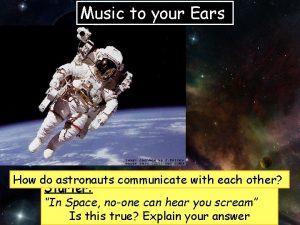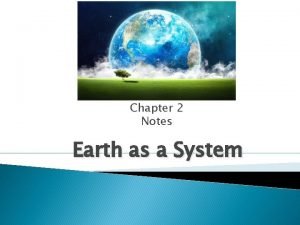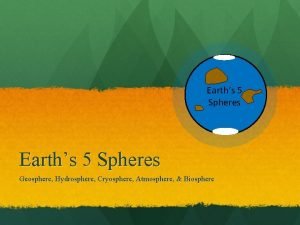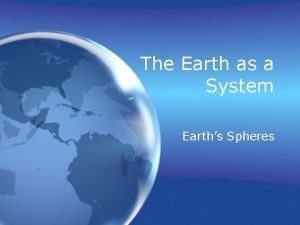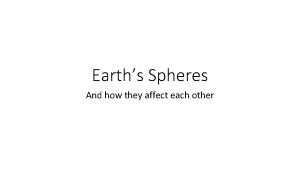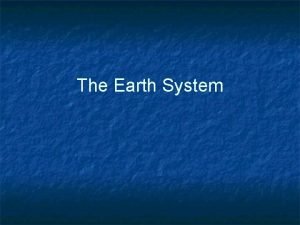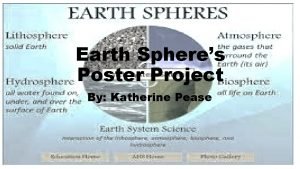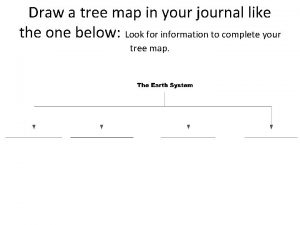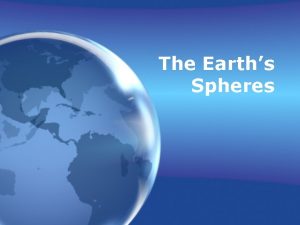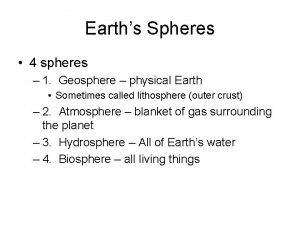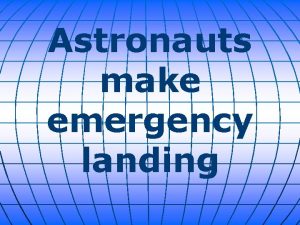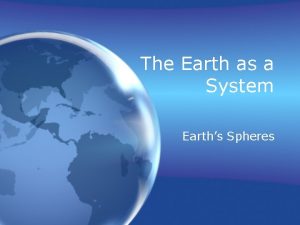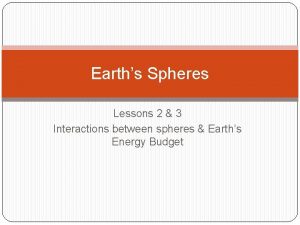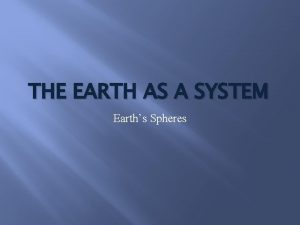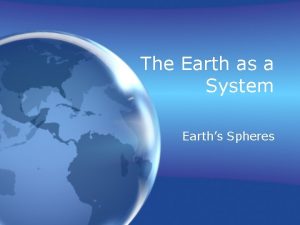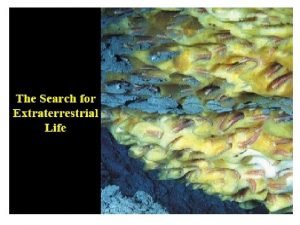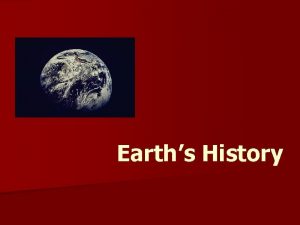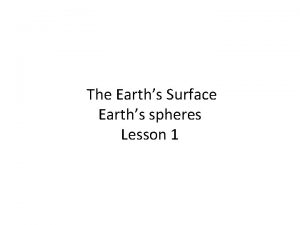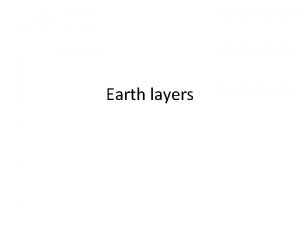Earths 5 Spheres Earth Apollo 17 astronauts captured
















- Slides: 16

Earth’s 5 Spheres

Earth Apollo 17 astronauts captured a snapshot of the Earth system on their way to the moon in 1972. Essentially everything that was a part of the system then is still a part of the system today—that's why it's considered a closed system. All of the matter (solid, liquid, and gas) and all of the processes that move energy and materials from one part of the planet to another make up the Earth system.

Looking at the image, what are the major parts of our planet that can interact as a system?

Earth’s Five Spheres ● Five major parts of Earth work together as a complex system: ice, rocks, water, air, and life. ● On a global scale, each part can be thought of as a sphere that when combined form our planet. ● Five parts are called the geosphere, hydrosphere, atmosphere, cryosphere, biosphere.

Geosphere Earth’s core, mantle, and crust: continents, ocean floor, rocks, sand, dust, metal, brick, and asphalt

Hydrosphere Earth’s oceans, lakes, rivers, groundwater, rain, and snow

Atmosphere: Earth’s oxygen, nitrogen, ozone, wind, and other gases

Biosphere Earth’s living organisms such as plants, humans, animals, insects and microbes

Cryosphere All of the frozen water on Earth: ice, glaciers, polar ice caps, icebergs, sea ice

Give several examples of the spheres in this pictures.

Do you think clouds should be classified as part of the hydrosphere or atmosphere? Explain why or why not.

Sphere Interactions ● The surface of the geosphere, where the rocky part of our planet is in contact with water, air, and/or life is generally where the spheres intersect and affect each other. ● The processes that move matter and energy from one sphere to another, we can call sphere interactions.

List the spheres and the interactions in these spheres.

● Humans (biosphere) built a dam out of rock materials (geosphere). ● Water in the lake (hydrosphere) seeps into the cliff walls behind the dam, becoming groundwater (geosphere), or evaporating into the air (atmosphere). ● Humans (biosphere) harness energy from the water (hydrosphere) by having it spin turbines (geosphere, because the turbines come from metal ores in the ground) to produce electricity.

Work with your partner to identify interactions in the picture.

What effect do you have on the Earth system? As a part of the biosphere, think of some ways that you change the atmosphere, hydrosphere, or geosphere. • List some Earth sphere interactions that result from your own daily activities.
 Earths 4 spheres
Earths 4 spheres How do astronauts communicate with each other
How do astronauts communicate with each other Speed of sound through steel
Speed of sound through steel Plural and possessive nouns
Plural and possessive nouns Two astronauts of masses 60 kg and 80 kg
Two astronauts of masses 60 kg and 80 kg What are the four spheres of the earth
What are the four spheres of the earth Identify which sphere of earth each image represents.
Identify which sphere of earth each image represents. Geosphere
Geosphere Earth systems foldable
Earth systems foldable 5 spheres of earth
5 spheres of earth Convergent plate boundaries
Convergent plate boundaries Spheres of the earth
Spheres of the earth Earth's spheres foldable
Earth's spheres foldable Earth's spheres
Earth's spheres How can you compare the terrarium to on earth system
How can you compare the terrarium to on earth system Spheres of the earth poster
Spheres of the earth poster Biosphere mind map
Biosphere mind map

